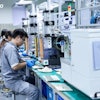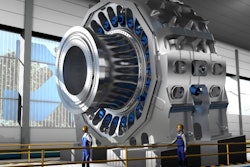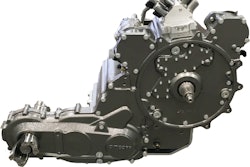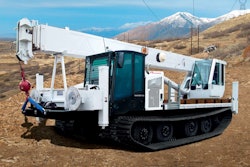The global tire industry is witnessing a lot of ups and downs with declining growth in mature markets like the U.S., Canada and Australia, while emerging economies like India, China and Vietnam are showing new growth spectrums. The last decade has proven to be quite interesting for many companies riding on the back of manufacturing growth in China. But with changing market dynamics, especially the announcement of Indonesia, Malaysia and Thailand pledging to reduce natural rubber exports by 615,000 T by August 2016, this could result in price stabilization for natural rubber.
In addition, removal of sanctions over Iran has opened up a closed market which has been waiting a long time to boost automotive and tire sales in the country. The next five years are expected to be extremely interesting with lots of movement in the sector, such as many countries exploring possibilities of an anti-dumping duty on Chinese tires followed by declining OEM production, rising wages in China, increasing online tire sales, and the most important: changing consumer sentiments with increasing per capita income.
Off-Road Equipment
The global off-the-road (OTR) and medium and heavy commercial vehicles (M&HCV) markets are continuing to grow in line with the growth in construction, mining, agriculture and logistics sectors. The market for off-highway vehicles such as cranes, wheel loaders, bull dozers, motor graders, excavators, telescopic handlers, forklifts, and backhoes is predominantly being driven by increasing volume of construction projects and expanding construction budgets, especially in the developing countries across the globe over the last five years.
However, the off-road vehicle market witnessed a difficult year in 2015 due to declining crude oil prices in addition to the continued weakening in the mining industry. Declining oil prices have impacted various economies, especially Middle Eastern countries, which derive a large part of their revenues from the oil sector. As a result, most of the oil dependent economies faced a widening of their fiscal deficit, translating into a narrowing of their construction budgets.
Several off-road equipment manufacturers such as John Deere and Komatsu witnessed a decline in their revenues in 2015 due to a slump in the sales of off-highway vehicles. Hence, various off-road OEMs are putting constant efforts into reviving their sales amidst challenging economic conditions; the companies are focusing on things such as improving their technology, enhancing the product safety features, and lowering the company’s operational costs.
Furthermore, off-road equipment manufacturers are concentrating on the product segments that derive a larger share of revenue. As of 2015, crawler excavators accounted for the largest market share, followed by wheel loaders and motor graders in the global vehicles market, in value terms.
In 2015, the global market for OTR vehicles was dominated by the Asia-Pacific region, which held the lion’s share. China has been the world’s largest construction market, on account of massive infrastructure development and rising urbanization. However, demand for construction equipment in China declined in 2015. China has an enormous production capacity for OTR vehicles, which is more than enough to meet its domestic as well as export demand for OTR vehicles. Moreover, slowdown in the European Union, Korea and Japan is negatively affecting the country’s OTR vehicle exports.
Apart from China, other prominent countries in the Asia-Pacific region include India, Singapore, the Philippines and Malaysia. As with most third-world countries that are continuously investing in infrastructure development and food production, the growing construction and agriculture markets are the major reasons for the increased demand for OTR vehicles in the region.
North America's off-road vehicle market was the second largest globally in 2015, with the U.S. being the largest segment of the continent. Latin American countries cumulatively accounted for the lowest share in 2015.
Commercial Vehicles
In addition to the OTR vehicle market, the global M&HCV market, which comprises bus, medium and heavy trucks, also declined in 2015. Declining crude oil prices impacted the production of M&HCVs, which declined at a year-over-year rate of 6.51% to reach approximately 3.85 million units in 2015, down from 4.12 million units in 2014.
The M&HCV market is also dominated by the Asia-Pacific region in terms of vehicle production. The region has been witnessing an increase in its market share since 2013. China, India, Singapore, Malaysia, the Philippines and Japan are the major countries that contributed towards increasing M&HCV production market share of Asia-Pacific.
Backed by an increasing number of MSMEs (Micro, Small and Medium Enterprises) coupled with a growing freight and logistics industry, the Asia-Pacific commercial vehicle market has witnessed an increase in its market share from 75.30% in 2013 to 75.74% in 2015. The Asia-Pacific region is followed by the North American region, which held a market share of 13.54% in the global M&HCV market in 2015.
Both the global off-road and medium- and heavy-duty on-road markets have been witnessing intense competition over the last five years. Moreover, customers are increasingly looking for better options and alternatives, which can allow them to reduce the total cost of a project while providing more advanced technology. Consequently, a growing number of customers are opting for renting and leasing off-road vehicles rather than purchasing them.
In addition to acquisition costs for the off-highway vehicle sector, contractors and construction companies have to incur associated ownership costs, such as operating, transportation, maintenance, regulatory certification fees, etc. In order to minimize these expenses and operate at economies of scale, renting has become a more feasible option for construction/contracting companies. Thus, increasing preference for renting construction equipment instead of buying is fueling the demand for the OTR rental market and more OEMs are now establishing their own rental divisions to increase their revenues.
Further, the OTR and M&HCV markets are supported by easy financing options offered by the manufacturers for the purchase of new or used equipment. These loan schemes available to customers have empowered them to capitalize on the opportunities available in the construction industry.
With the rapidly changing global market landscape, and several direct influences on rubber prices and equipment demand, the next five years will be interesting to watch progress for tire manufacturers and OEMs alike.
This article is based on an in-depth report for the tire industry covering 80 countries by TechSci Research, a research-based management consulting firm providing market research and advisory solutions to its customers worldwide, spanning a range of industries.
TechSci Research's individual market research reports are in-depth market intelligence reports providing deep contextual knowledge about a country's tire market such as tire and vehicle production, market size by value and volume, followed by market share for leading tire companies, market size by vehicle type such as passenger car tires, off-the-road (OTR) tires, Heavy Commercial Vehicle tires, and more.
These 80 tire research reports go a step ahead in sharing further market segmentation such as radial versus bias tires adoption, sales being generated by traditional retailers versus online tire sales along with tire import and export analysis for each country. These reports don't just provide a lot of data for each country but also explain the market dynamics such as the reasoning why markets are growing or declining along with local government policies and regulations impacting the automotive sector including taxes such as custom duties on tires and much more.

















![Sa P75 I Sahr[80]](https://img.oemoffhighway.com/mindful/acbm/workspaces/default/uploads/2025/10/sa-p75-isahr80.Cn3n79HB4H.jpg?ar=16%3A9&auto=format%2Ccompress&fit=crop&h=135&q=70&w=240)